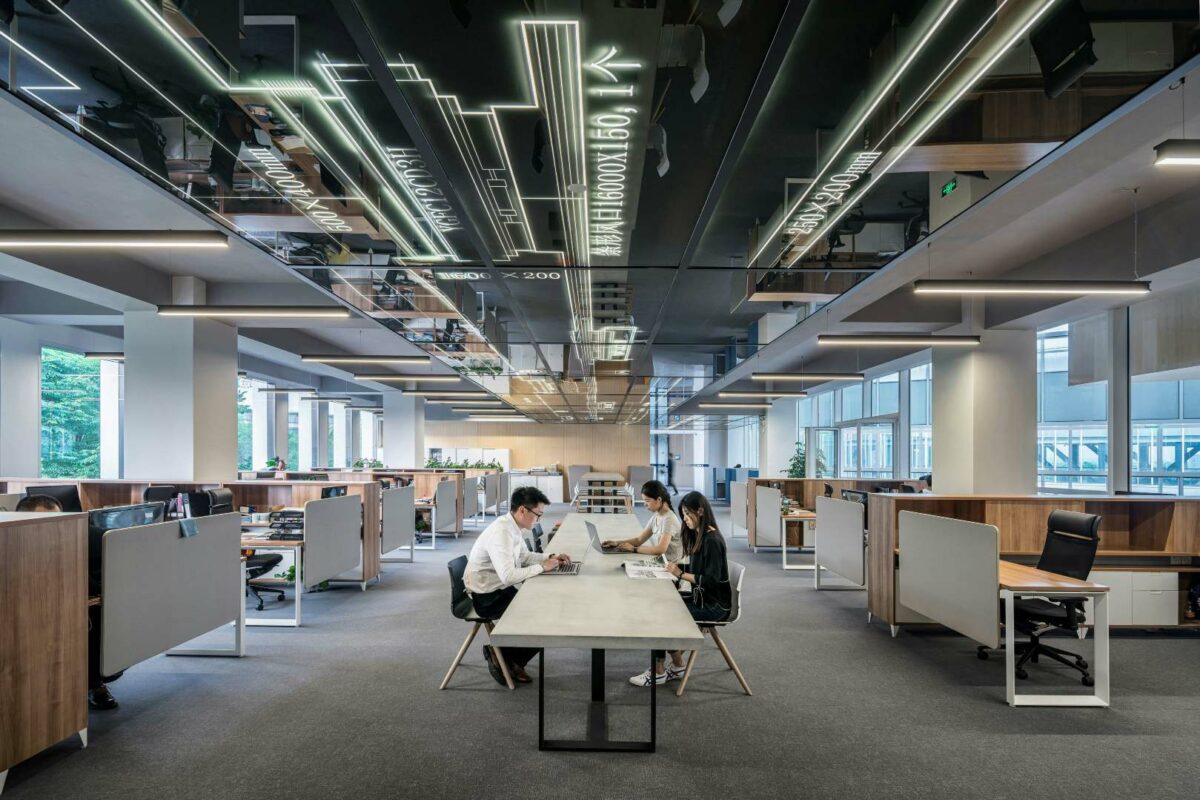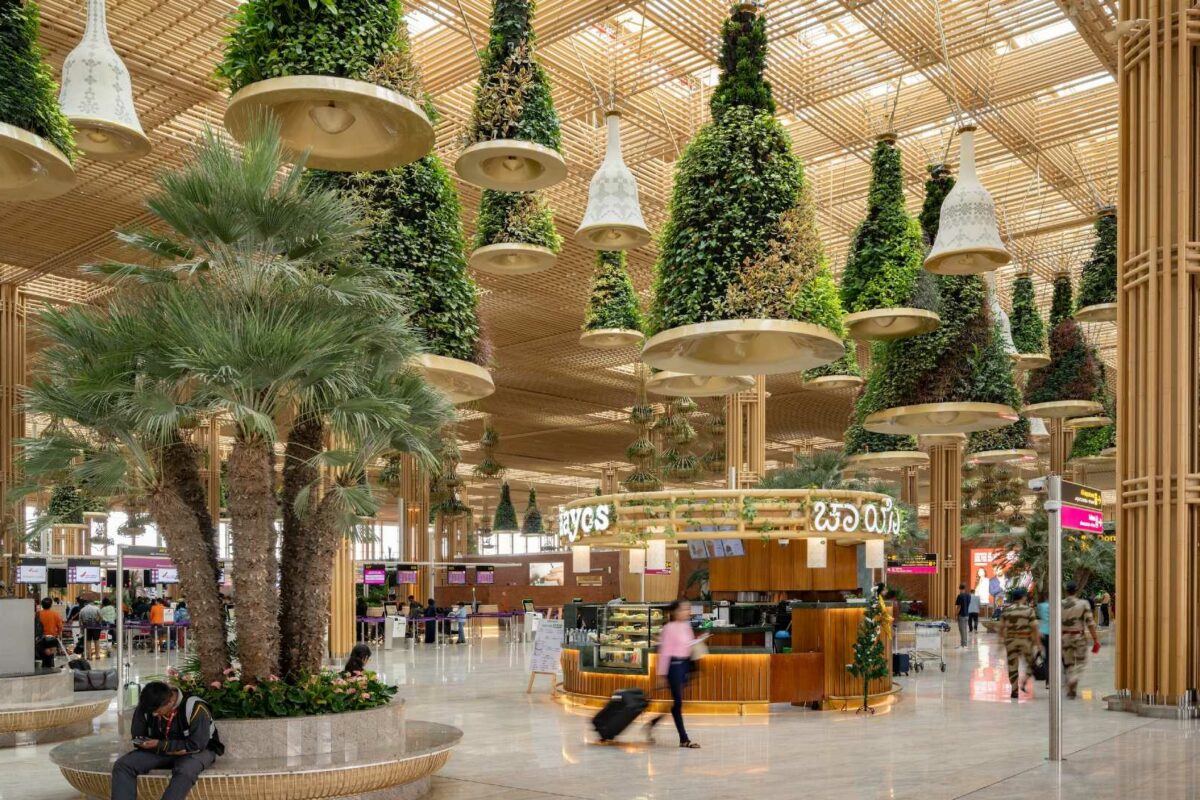Martin is the founder of Fairsnape, a strategic consultancy specialising in built environment improvement and sustainability, He is also vice president of Living Future Europe, championing the ILFI Living Building Challenge and other programmes across Europe and for the last four years was vice chair of RESTORE. An EU-funded, pan-European network consisted of 150 researchers and industry representatives, driving for progress on built environment RESTORE completed in 2021.

A passionate believer in regenerative sustainability, Martin supports multiple built environment organisations, from a local to a global level. He has been awarded a Living Hero status with the International Living Future Institute and his book FutuREstorative, Working Towards a New Sustainability, is published by RIBA. He is also co-founder of online construction carbon measurement tool ConstructCO2.
From reconnecting with nature to rethinking carbon management and sharpening our focus on materials, Martin tells Work in Mind why we need to design and develop our workspaces using a regenerative mindset….
Martin, you are a passionate advocate for regenerative sustainability. Is sustainability as we know it no longer enough?
In the late 80s, the Brundtland definition outlined sustainability as “doing nothing today to compromise future generations.” When you think about that now, 35 years later, it’s pretty embarrassing. Not only has sustainability failed, but we have compromised future generations and things are getting worse. We are putting more carbon into the air, experiencing more floods and seeing bigger and bigger impacts as a result of climate change.
A large part of the problem is that over the last few decades, we have increasingly disconnected ourselves from nature. We have seen it as a resource to use and as a dumping ground, and now that is coming back to bite us.
So yes, sustainability-as-usual isn’t quite cutting it. Today, we need to take sustainability a step further, and that means adopting a new mindset. A regenerative mindset.
Talk us through the regenerative mindset…
Regenerative sustainability is a different way of seeing things. In many ways it is not just what we do, but who we are. It’s a mindset or a philosophy that effectively unites people with the common ambition to enhance sustainability and repair our relationship with nature.
Instead of a prescriptive approach, telling us what to do, it’s a way of thinking that enables everyone to ask different and better questions. Ultimately, the regenerative aim is to ensure that our organisations, buildings, products and lifestyles co-evolve and thrive as part of nature, rather than divorced from the living systems we all depend upon.
Importantly, the regenerative mindset promotes a connected approach, rather than thinking about things in isolation. For example, perhaps your business might have an environmental, a safety, sustainability manager and a head of wellbeing, all working in isolation. The regenerative approach would be for those individuals to collaborate and see what integrated impact they can have.
Vitally, regenerative thinking encourages cross-pollination. It also makes us think about where we as an individual or a business sit within the greater scheme of things. For example, we are all inextricably connected to nature and depend on it – if nature around us collapses, we collapse.
Has the pandemic accelerated the regenerative movement?
Yes, it certainly has. It helped people realise that a lot of the big problems we are facing – such as the climate crisis, issues in mental health and even physical health – come back to our relationships with each other and with nature. During lockdown for example, millions of us rediscovered getting out for a walk and reconnecting with their local communities, which brought incredible benefits.
For my part, lockdown inspired me to start Zoom Regenerative, a monthly online forum that I now run with sustainability consultant Anna Williamson. It’s a place where people in the world of sustainability and design share their projects and plans. It is a place where we champion the individual, rather than case studies from corporate approaches. Over the last two years we have built an incredible global community, largely made of up people at the forefront of architectural design, construction and sustainability. Our 90-minute sessions involve talks, open discussion and two-minute breakout or “speed dating” sessions, where people network one-to-one.
Zoom Regenerative has created an incredible ripple effect, sparking projects and powerful collaborations. I liken it to pollinating – the sessions plant seeds, which then get carried away. We have had fantastic feedback, largely through LinkedIn, and we regularly see participants applying information they’ve picked up in design, construction and in education. Ultimately, it has helped us connect people who are on a mission to transform the built environment.
Can you give us any examples of this cross-pollination?
As we heard on a recent session, Joey Pringle, of Veshin and a long time member of the ZR community has relocated his activities from the UK to Costa Rica as a result of connections and inspirations from zoom regenerative.
We are incredibly proud to have published The Regenerative Playbook, which is an inspirational, digestible guide to regenerative thinking. It is created in collaboration with Anna Williamson and Content Coms, (not only the publisher of Work in Mind – but a specialist in creative content for businesses that are driving for a more sustainable future).
The regenerative ethos can seem an elusive and overwhelming topic, but Content Coms founder Joanna Watchman has helped us create a brilliantly concise guide. It makes the Regenerative approach readily accessible to a much wider audience, and really shows individuals and businesses how they can take sustainability a step or two further. Whether you’re a CEO, senior leader, contractor or a sustainability student, it provides a framework which will help you explore what a regenerative mindset means as an individual and within your own business.
This isn’t the first project Joanna and I have collaborated on. The Regenerative Playbook was inspired by The Anti-Greenwash Playbook, a brilliant book offering advice on how brands and business can be authentic and transparent about their sustainability communications. Did you know that the Competition and Markets Authority says up to 40% of green claims could be misleading to consumers? That’s not good enough – we can do better. Like The Regenerative Playbook, this is another quick read that is cleverly designed to inspire big results. It’s also a great conversation-starter, whether you show it to a manufacturer, contractor or sustainability student.
How does a regenerative approach influence the built environment?
It encourages us to think about how a building itself can contribute to a better future. Yes, we can use natural materials, but we can go much wider than that too. For example, a building might be designed to generate more energy that it requires, or the project could involve cleaning up the local water courses. Essentially, it’s about creating buildings that give back and enhance the community. We can go further than only just minimising the strain a building puts on natural resources.
This is the ethos behind the Living Building Challenge, which I’m a huge advocate of. It’s a fantastic regenerative tool or programme, including elements like ‘habitat exchange’. If you are doing harm to a piece of land by building on it, you might look to improve land elsewhere. It’s about ensuring biodiversity net gain, but going beyond, with bells and whistles.
You can weave a regenerative ethos into the most embryonic stages of the design process. We have recently been taking designers on nature walks while discussing a project. We’ll talk through what the building could look like and how it would interact with nature, and those conversations are vastly different to if you followed the same agenda in a design office. There’s a hierarchy or pecking order in the boardroom, where you’re either the client, partner or subcontractor, but if you go for a walk and everyone’s wearing a raincoat, it levels things up a lot.
What does the regenerative approach mean for the wellbeing of the people who ultimately use our buildings?
The regenerative mindset is about designing to promote human health, as much as planetary health – the two are inextricably connected after all. Instead of designing spaces that won’t make people ill, it’s about creating spaces that actively make people well. We can go much further than we do, and create buildings that maintain good health and actively enhance our health. An approach based on ‘salutogenesis’, really understanding what enables better health.
In the past, we didn’t even think about this, but people are now starting to join the dots. Just take a look around at the wealth of inspiring content on Work in Mind, the knowledge platform founded by Joanna. Dedicated to the relationship between healthy buildings and workplace wellbeing, it regularly features some of the guiding lights in sustainability, wellbeing and the built environment. It delves into subjects like biophilic design, circadian lighting and materials transparency, all of which form a crucial part of the regenerative philosophy.
Do you feel optimistic about the future?
Yes, I do. At COP 26 we probably achieved more than we could have dreamt of, and MP Duncan Baker’s call for a Carbon Emissions (Buildings) Bill was recently carried unanimously in parliament. For the first time, it would make it mandatory to calculate and reduce the embodied carbon footprint of new buildings.
But what really gives me hope is the passion I’m seeing in young people, whether that’s in Zoom Regenerative, ACAN (Architects Climate Action Network) or on the streets. They may not use the word ‘regenerative’ but that probably describes what they are looking for. They don’t want us to be just sustainable, or only a little less bad. They are looking for radical change.
Encouragingly, leading developers and contractors are now starting to get on board with responsible material sourcing too. And, over time, cutting out toxic ingredients, such as on the Red List gives a market share to the start-ups creating products from healthier, natural materials. It creates a more regenerative economic landscape.
We are also starting to question why we financially reward people for destroying the planet, as they degeneratively dig up resources and cause pollution. Meanwhile, the people doing good regenerative things are being recognised, heard and appreciated.
In 20 years, I’d like to be able to say that we have arrested climate change, but there are no easy options left – they are all radical. We have wasted time on trying to do things too easily, or not at all. We have to decarbonise, and my criticism of the Net-Zero 2050 deadline is that it’s too far away. People don’t realise we needed to greater take action yesterday.
Content Team
Work in Mind is a content platform designed to give a voice to thinkers, businesses, journalists and regulatory bodies in the field of healthy buildings.




